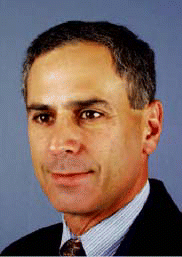As otolaryngologists are performing more procedures on an in-office basis, more are also using conscious sedation in the clinic setting. They are not alone: nearly 70% of all surgical procedures are performed on an outpatient basis with conscious sedation, which avoids the costs of inpatient care. The demand for conscious sedation currently exceeds the availability of anesthesiologists and nurse anesthetists to administer the sedation, and therefore more physicians and nurses are being trained in the administration and monitoring of conscious sedation, at both moderate and deep levels.
Explore This Issue
December 2006Not surprisingly, the trend toward surgeons administering in-office conscious sedation themselves is occurring alongside concerns about safety. An article in the Wall Street Journal (August 9, 2006) pointed to the risks associated with conscious sedation, and particularly with nonanesthesiologist practitioners administering it. New guidelines have been developed by both the University HealthSystems Consortium (UHC) and the American Society of Anesthesiologists (ASA) to address these concerns and ensure the safe use of conscious sedation when the state of moderate sedation is induced. The ASA guidelines (www.asahq.org/publicationsAndServices/credentialing.pdf ) define levels of sedation and monitoring equipment, as well as the formal training, that a practitioner should have in order to safely administer moderate sedation. Both organizations are also developing guidelines for non-anesthesia professionals to administer deep sedation.
The guidelines define moderate sedation as a drug-induced depression of consciousness during which patients respond purposefully to verbal commands, either alone or accompanied by light tactile stimulation, and specify that intubation is not required and that spontaneous ventilation is adequate. Deep sedation is defined as a state in which patients cannot be easily aroused but respond purposefully following repeated or painful stimulation. Patients in deep sedation may also need intubation because spontaneous ventilation may be inadequate.
Proper Training Required
The key message is safety first, said Ira D. Papel, MD, in a phone interview. Physicians who use it need to be trained in appropriate dosing and have appropriate monitoring equipment, and they also need to know the signs that the patient may have an inappropriate dose, either too high or too low. Dr. Papel is a facial plastic and reconstructive surgeon in private practice in Baltimore, where he is an associate professor of otolaryngology/head and neck surgery at Johns Hopkins Medical Center. He is also an immediate past president of the American Academy of Facial Plastic and Reconstructive Surgery.
Physicians are using it more often for minor surgical procedures, and they can use it in-office for many procedures that don’t need to be performed in the hospital or surgery center, he said. There are many settings that offer courses in conscious sedation. Most hospitals offer one-day courses, as do many associations’ conferences and meetings. Most hospitals are willing to give physicians the privilege to do conscious sedation if they’ve undergone such training.

Leave a Reply